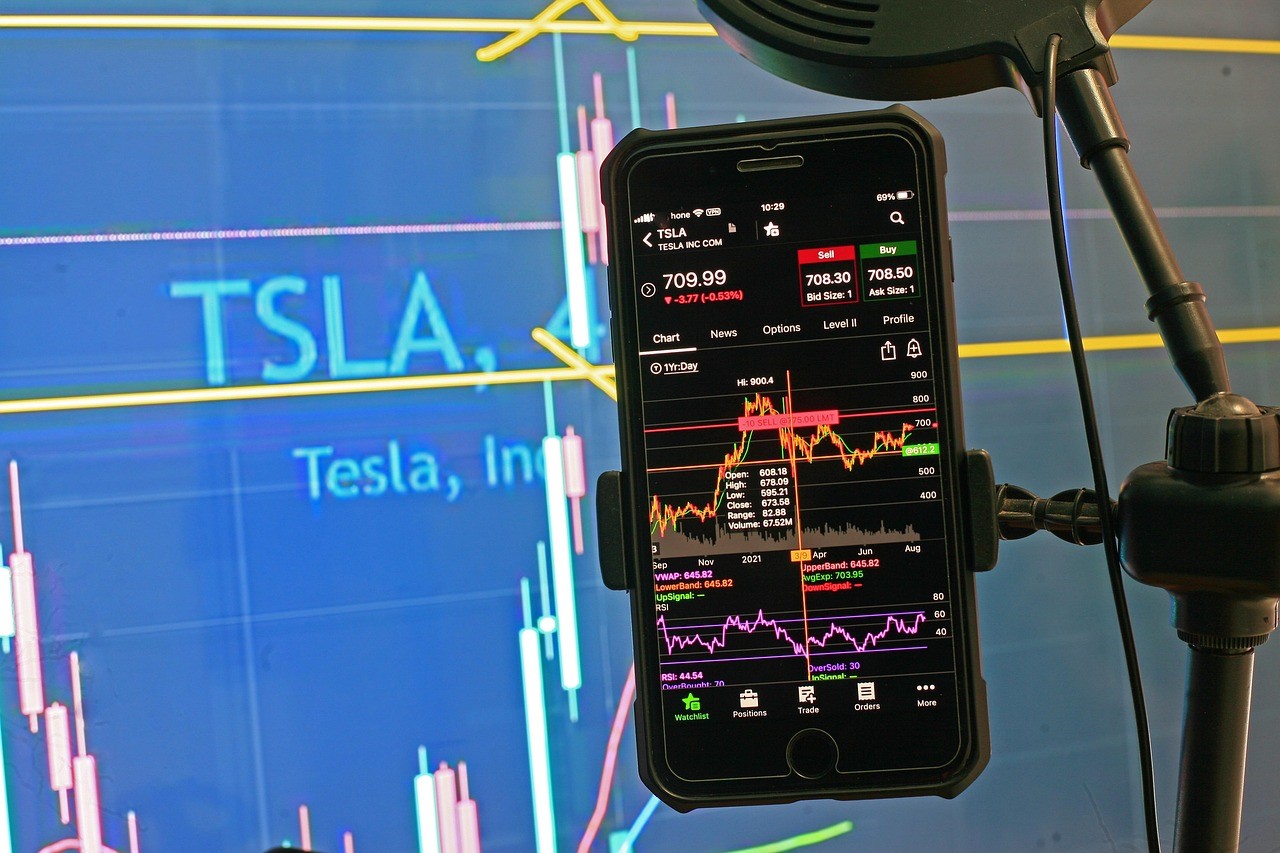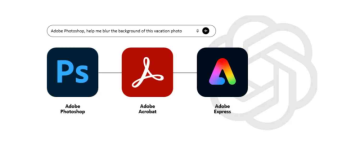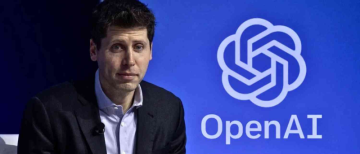Ever wondered how Tesla's stock moves right after Elon Musk tweets? AI-driven trading systems already know analyzing market sentiment in milliseconds to predict shifts before most traders even react. Welcome to the future of trading.
AI is rapidly transforming the stock market, making traditional trading strategies look outdated. Algorithmic (algo) trading where AI-powered programs execute trades automatically is the new norm, offering traders speed, accuracy, and data-driven decision-making.
Who or what really moves the market at any given moment? What is Quantum Code 360? How do investors react to a new product launch from a Dow Jones-listed company? AI trading tools, with their ability to analyze financial data and predict market movements, can answer these questions in seconds helping you either rake in profits or dodge losses. In this article, we’ll break down how AI is changing stock trading, explain how it works, and share real-world examples of AI-driven success, including insights into Tesla investing.
_1740421877.jpg)
What does AI training mean?
AI trading isn’t just about automation but it’s about intelligence. With machine learning (ML), deep learning (DL), and natural language processing (NLP), AI can analyze vast financial data, predict market trends, and execute trades with unmatched efficiency. Computer programs have long been used by hedge funds and investment firms, but generic trading software has its limitations as it depends on static models which must be changed by hand. AI changes the game. Instead of static rules, AI-driven systems learn from historical and real-time data, evolving their own trading strategies. They adjust for market volatility, adapt to new information, and refine their accuracy over time.
AI doesn’t just crunch numbers faster than humans but it sees patterns we can’t. That’s why AI-driven stock intelligence tools are becoming indispensable. But how do they work? Let’s break it down.
How does AI in stock trading work?
Think of an AI trading system as a hyper-intelligent market analyst that never sleeps. It constantly scans market data, adapts to new trends, and refines its strategies all in real time. Here’s how it all comes together:
1. Data collection
AI trading software pulls in a massive range of data: historical and real-time prices, trading volumes, financial news, earnings reports, and economic indicators. It even scans alternative data sources like social media sentiment and web traffic, offering insights beyond traditional metrics. For those interested in Tesla investing, AI can analyze brand sentiment, sales reports, and even Elon Musk’s tweets to predict potential stock movements.
2. Feature extraction
Raw data is messy, so AI cleans it up by removing noise and irrelevant information which is really helpful. Then, AI and data scientists identify the most relevant variables (a.k.a. features) that impact stock movements. This step ensures the AI focuses on meaningful patterns, not random noise.
3. Model training
Here’s where AI trading gets its edge. Using historical market data, AI models learn to predict price movements and identify profitable trades. These models are rigorously tested (backtested) to ensure they work before going live.
4.Real-time trading
Once trained, AI systems monitor the market in real time, generating buy or sell signals within milliseconds. Many AI-driven platforms even execute trades automatically, seizing opportunities before human traders can blink. Built-in risk management tools, like stop-loss and take-profit levels, help safeguard investments.
5. Continuous learning
Unlike traditional software, AI keeps getting smarter. As it processes more data and market conditions shift, it refines its strategies making it more accurate and effective over time. For Tesla investors, AI can analyze brand sentiment, production trends, and financial reports to predict stock movement more accurately than traditional methods.
AI’s impact on the investment landscape
AI trading is revolutionizing the industry with:
- Algorithmic trading: AI executes trades based on predefined rules and criteria.
- High-frequency trading (HFT): This involves the placement of thousands of orders within fractions of a second, with the objective of capitalizing on micro-price movements.
- Robo-advisors: AI driven platforms assist investors in holding portfolios aligned with investment goals and risk tolerance.
- Predictive analytics: This type of analysis which is made possible by artificial intelligence, anticipates market directions and possible price movements with astounding precision.

Artificial Intelligence not only replaces conventional means but also complements them, rendering quantitative trading more technologically sophisticated than before. For anyone considering investing in Tesla, AI can be used to monitor stock movement, manufacturing trends, and key financial indicators.
The tech behind AI-powered trading
AI trading relies on cutting-edge technologies, including:
Big Data Analytics
AI systems need information and tons of it. They analyze millions of data points, from financial reports to market trends, in real time.
Machine Learning
ML algorithms identify patterns in market data and help AI models refine trading strategies.
Common ML techniques include:
Supervised learning - AI is trained on historical data to predict outcomes.
Unsupervised learning - AI detects hidden patterns without predefined labels
Reinforcement learning- AI improves through trial and error, fine-tuning strategies over time.
Deep Learning - Deep learning models, inspired by the human brain, excel at recognizing complex patterns.
They’re used for:
- Portfolio management: AI selects stocks, diversifies portfolios, and predicts long-term trends.
- Social media analysis: AI tracks sentiment by scanning posts and reactions.
- News sentiment analysis: AI evaluates media coverage to gauge market sentiment.
- Market time series analysis: AI detects anomalies and predicts price movements over time.
- Natural Language Processing (NLP): NLP enables AI to interpret financial reports, news articles, and social media chatter helping traders anticipate market shifts before they happen.
- Cloud Computing : AI trading demands immense processing power. Cloud computing ensures that AI platforms can scale, process large datasets, and execute trades without lag.
AI isn’t just theoretical—it’s delivering results. Consider these cases:
Chipotle: Foot traffic analysis by Foursquare correctly predicted a drop in earnings before the official report was released.
GoPro: Even though analysts and professionals were optimistic, Quandl used different data (email receipts) to forecast falling share prices and they were correct.
Hedge Funds: Funds like Renaissance Technologies and Bridgewater Associates have also begun employing AI trading to be ahead of the game.
Tesla: AI-powered trading firm Qraft Technologies increased its Tesla stock holdings despite a lackluster Robotaxi event analyzing hidden value and predicting a 40% stock surge in November. This showcases how AI-driven strategies can outperform traditional market sentiment analysis.
_1740422223.jpg)
Challenges in AI-powered trading
Despite its advantages, AI trading isn’t without hurdles:
Data quality and volume : AI needs clean, high-quality data to make accurate predictions.
Infrastructure : Real-time trade demands strong, secure, and low-latency infrastructure.
Lack of interpretability : Artificial intelligence systems are mostly "black boxes," and it is difficult to understand the rationale for their decisions.
These challenges need to be addressed by integrating AI expertise and in-depth financial market knowledge.
Best practices for AI trading platform development
While AI is a powerful tool, it can’t replace human intuition, creativity, and critical thinking. The best traders don’t just rely on AI—they combine AI’s analytical power with their own insights. Here are some other techniques you can follow to maximize results:
- Define clear goals: Outline target markets, strategies, and risk management protocols upfront.
- Ensure data quality: Use diverse data sources and robust preprocessing techniques to eliminate biases.
- Choose the right algorithms: Select models aligned with your trading strategies and continuously update them.
- Test rigorously: Validate AI models in simulated environments before deploying them in live trading.
At this point, you've realized that disregarding AI in trading isn't just a gamble—it’s akin to entering a firefight armed with a blade. AI-based tools are transforming the market, offering traders keener insights, quicker automation, and a significant advantage over rivals.
Even industry giants like Tesla investing in AI-driven approaches demonstrate that this tech represents the future. If you're eager to harness this edge, here’s how to begin:
Explore AI: Turn It Into Your Secret Weapon
Whether you're a day trader seeking quick profits or a long-term investor playing the long game, AI is shifting the landscape. Don't just observe from afar but start looking into how AI-powered systems like Quantum Code 360 can improve your strategies, identify patterns faster, and handle the heavy lifting. The more you grasp AI, the better you can apply it to outmaneuver the market.
Double Down on What Makes You Human
AI excels at number crunching, but it still can't match human intuition, creativity, or gut instinct. This gives you an edge. Hone your skills to think critically, interpret subtle meanings, and make bold choices—because in these areas, humans still come out on top.
Keep Adapting
The biggest mistake? Getting set in your methods. The top traders in the AI age are those who adjust, experiment, and grow with the tech. AI keeps evolving, and you should too.
Jump in now and gain an edge with AI! Smarter strategies, faster decisions, and automation at your fingertips. Just as Tesla invests in AI to lead the pack, you can also leverage this technology to enhance your trading potential. Start integrating AI into your approach today, and ensure you're leading the way and not just trying to catch up.
Note: This article is for informational purposes only and does not constitute financial advice. Investors should conduct their research or consult with a financial advisor before making investment decisions.
Disclaimer
Trading carries inherent financial risks, including the potential for significant losses. Historical data indicates that a substantial percentage of traders experience financial downturns. Names such as "AI Trading" mentioned on our site are fictitious and used solely for marketing purposes. Testimonials and featured media may include actors and are intended for promotional use only. Before engaging with any trading platform, we strongly advise reviewing its terms, conditions, and disclaimers. Additionally, ensure compliance with tax obligations related to capital gains in your jurisdiction, such as CFTC regulations in the US. In regions like the UK, financial regulations, including FCA Policy Statement PS20/10, impose restrictions on certain marketing practices for CFDs. Adhering to local financial laws is essential. By submitting your details, you agree to their use by third parties as outlined in our Privacy Policy and Terms and Conditions. Whether you trade independently, use automated trading software, or consult professional brokers, make informed decisions that align with your financial strategy.
Vygr News & Vygr Media Private Limited and its authors are not responsible for your actions and decisions on your trading activities.
© Copyright 2024. All Rights Reserved Powered by Vygr Media.























